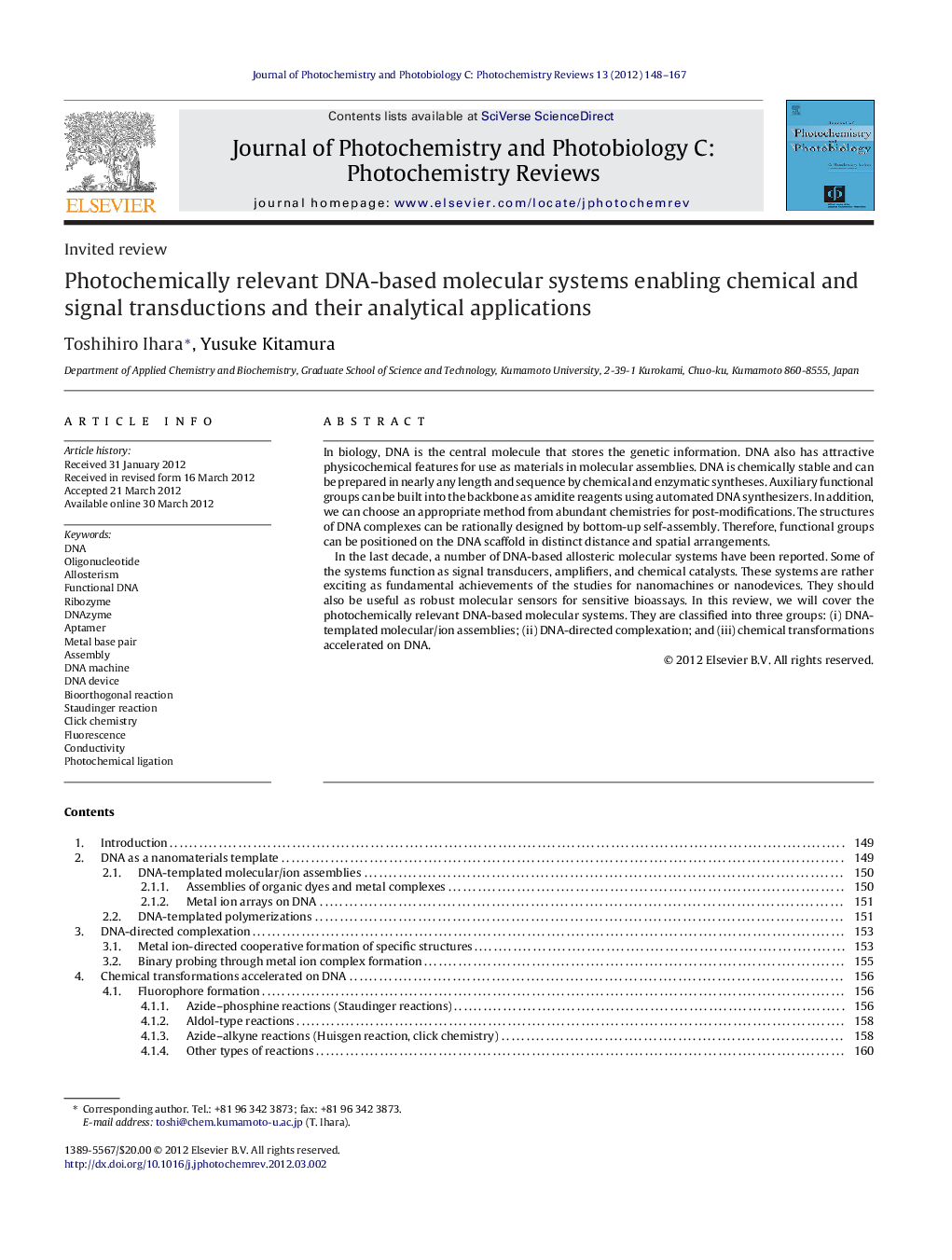| Article ID | Journal | Published Year | Pages | File Type |
|---|---|---|---|---|
| 31335 | Journal of Photochemistry and Photobiology C: Photochemistry Reviews | 2012 | 20 Pages |
In biology, DNA is the central molecule that stores the genetic information. DNA also has attractive physicochemical features for use as materials in molecular assemblies. DNA is chemically stable and can be prepared in nearly any length and sequence by chemical and enzymatic syntheses. Auxiliary functional groups can be built into the backbone as amidite reagents using automated DNA synthesizers. In addition, we can choose an appropriate method from abundant chemistries for post-modifications. The structures of DNA complexes can be rationally designed by bottom-up self-assembly. Therefore, functional groups can be positioned on the DNA scaffold in distinct distance and spatial arrangements.In the last decade, a number of DNA-based allosteric molecular systems have been reported. Some of the systems function as signal transducers, amplifiers, and chemical catalysts. These systems are rather exciting as fundamental achievements of the studies for nanomachines or nanodevices. They should also be useful as robust molecular sensors for sensitive bioassays. In this review, we will cover the photochemically relevant DNA-based molecular systems. They are classified into three groups: (i) DNA-templated molecular/ion assemblies; (ii) DNA-directed complexation; and (iii) chemical transformations accelerated on DNA.
Graphical abstractFigure optionsDownload full-size imageDownload as PowerPoint slideHighlights► Nanomaterials such as metal clusters and conducting polymers form on DNA. ► Several bioorthogonal reactions are accelerated on DNA. ► Photochemical ligation proceeds effectively on DNA template.
